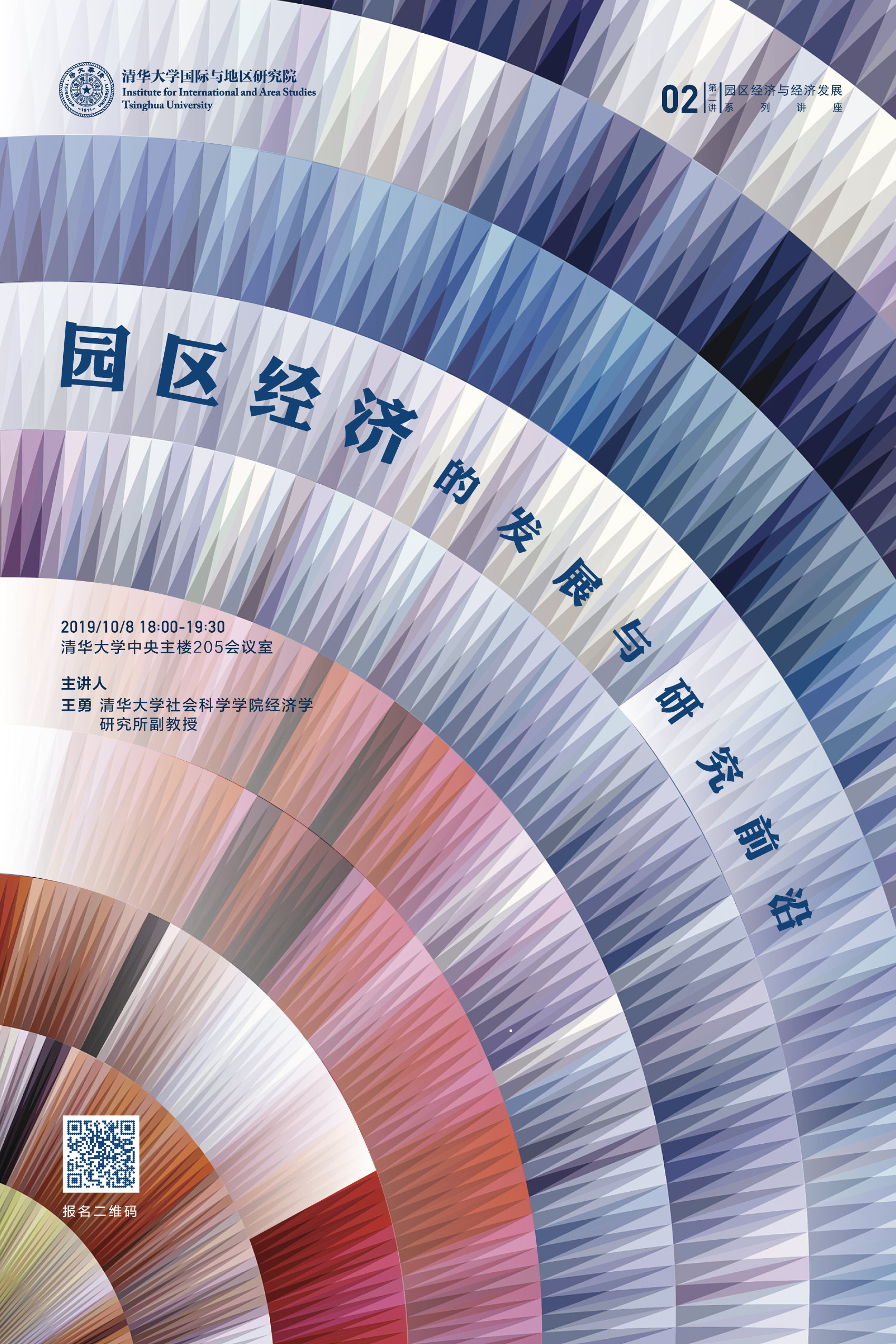
On the evening of October 8, 2019, the second session of the Park Economy and Economic Development Lecture Series titled the “Development of China’s Park Economy” was held at Conference Room 205 of the Central Main Building of Tsinghua University. Wang Yong, Associate Professor, Institute of Economics, School of Social Sciences, Tsinghua University, delivered the speech, which was attended by doctoral students from the Institute of International and Area Studies (IIAS) of Tsinghua University.
The lecture covered four parts, namely the origin and type of parks, the historical evolution of the park economy, its role and significance of the park economy, and its current development. It started with a detailed description of the types of development parks and introduced China’s current major economic development zones, including national economic and technological development zones, national high-tech development zones, national tourist resorts, special customs supervision areas, and national border cooperation areas. Prof. Wang discussed the historical evolution of China’s park economy from four aspects: The initial Shekou model, the rise of economic development zones, the development of high-tech parks, and the development of free trade zones. In the third part, Prof. Wang pointed out that the establishment of economic development zones has significantly driven the economic and social development of the country (or region) and economic development zones can revitalize export industries, expand foreign trade, introduce advanced technologies, extract management experience, increase foreign exchange sources, maximize foreign exchange income, create employment opportunities, prosper local economies, and promote regional development. In terms of source of park revenue, currently, it mainly includes: traditional services(e.g., land development and real estate development), value-added services (e.g., park operation and management and living supporting services), business incubation and financing (e.g., real estate finance, industrial investment and incubation). In addition, because the park benefits from the support of national and local policies during development, the fiscal transfer income, tax reductions and exemptions it receives are also important sources of revenue.
Finally, Prof. Wang concluded that after more than 30 years of development, China’s park economy is based on the centralized utilization and operation of multiple production factors such as land, capital, technology, and talent, as well as the support of multiple preferential policies. Economic growth, technological progress and capital accumulation have made important contributions. But on the other hand, because most of China’s current park development models are government-led, coupled with imperfect institutional arrangements, various regions are in the process of park planning and development. There have been obvious problems of “emphasis on quantity over quality”, homogeneous development and inefficient use of resources or even waste, which weakens the further improvement of the economic benefits of the park economy.
He believed that China’s development zones are currently facing four major problems: Excessive numbers and homogenization of competition, industrial agglomeration effects facing spatial deconstruction, unidentified leading industries leading to reduced scale effects, and emphasis on policies rather than services resulting in missing platform effects. Prof. Wang mentioned that the park economy has great research potential and value in terms of macro, meso and micro levels. If compared with the developing countries studied by the students at IIAS, the development of China’s park economy is at the forefront of the world. He further emphasized that the main reason for the successful experience of China’s economic development can be attributed to the well-doing of state-owned enterprises and the development of the park economy, which plays a vital role in the process of China’s economic growth and is difficult to see in other developing or developed countries.
During the Q&A session, as to the question of the comparison between China and India in the development of special economic zones, Prof. Wang responded that the government is responsible for primary development and the enterprises operating the park do secondary development, but secondary development should serve the government’s primary development. In fact, it means that the government has participated in the industrial planning and layout. In a park, various enterprises are seemingly operating independently, but they are all to serve the local government’s park planning. On contrary, in India, both primary and secondary developments are handed over to enterprises.




